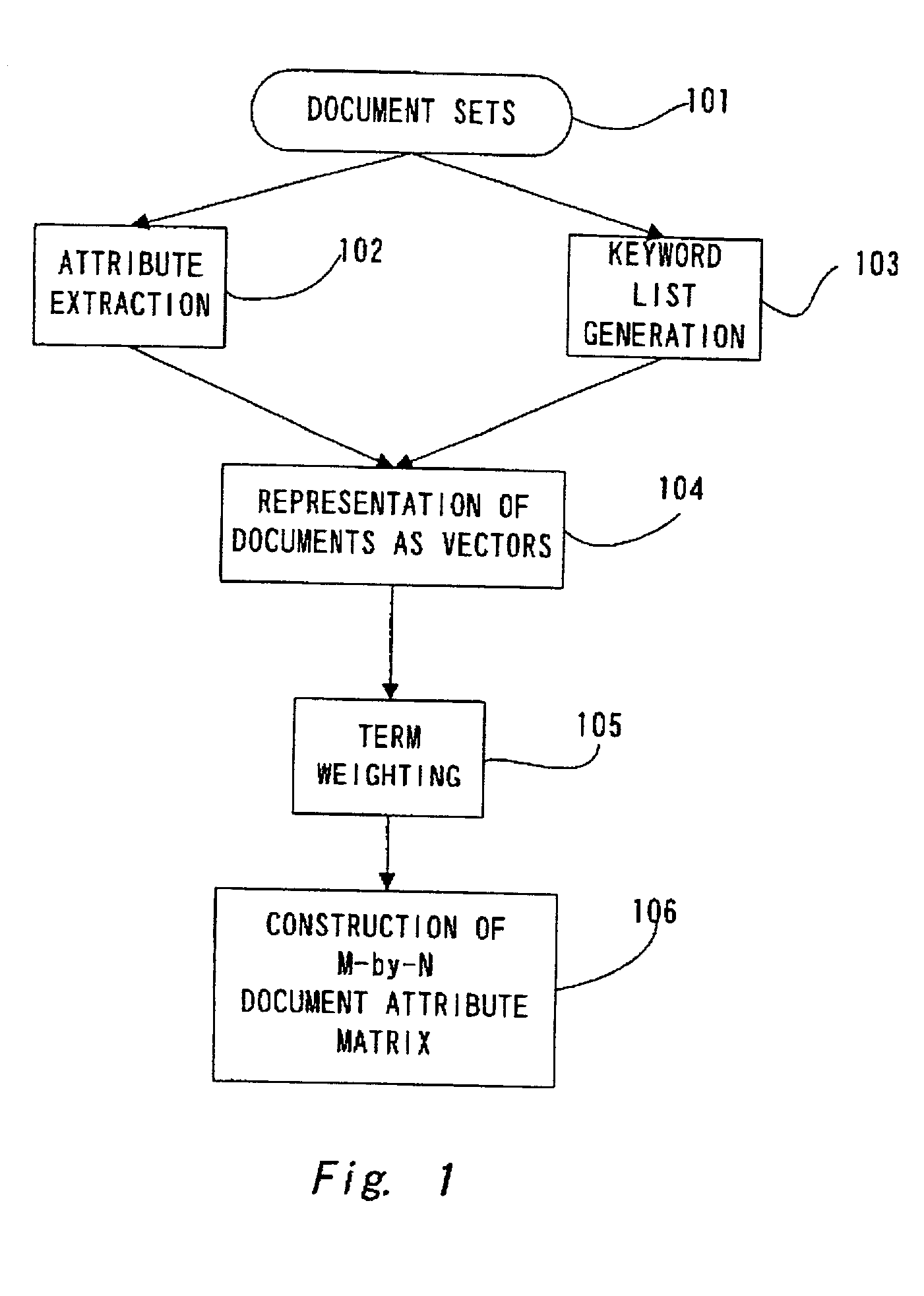Computer system and program product for estimation of characteristic values of matrixes using statistical sampling
a computer system and matrix technology, applied in the field of computer system and program product, can solve the problem of the upper limit of the size of the matrix which can be handled in the computer system, and achieve the effect of economic and effectiv
- Summary
- Abstract
- Description
- Claims
- Application Information
AI Technical Summary
Benefits of technology
Problems solved by technology
Method used
Image
Examples
first embodiment
[0053] In the first embodiment according to the present invention, the process proceeds to the step 204 and execute random sampling of the rows from the matrix A for each j using a random number generator routine. The sampling may the executed without any limitation, however, the sampling may be executed such that the same row is not sampled twice, however, any other sampling procedure may be adopted as far as the random sampling is carried out sufficiently. As shown in FIG. 2, the algorithm according to the present invention then proceeds to the step 205 and executes creation of a smaller m-by-N matrix A' from randomly selected rows of the matrix A. The processes 204, 205 may be repeated, for example, for 50 times to generate different smaller matrixes having the same m value in the step 206. Any repeat number may be used in the present invention. After the procedure of the step 206, different m-by-N matrixes are constructed by randomly selected rows.
[0054] In the step 207 shown in...
second embodiment
[0056] FIG. 4 shows second embodiment of the algorithms according to the present invention. In the second embodiment according to the present invention, the averaging step of the singular values is excluded as far as results with sufficient accuracy may be obtained. The procedure of the second embodiment starts from the step 401 and defines M-by-N matrix A as described above in the step 402. In the step 403, "m" is derived from the formula (3), while j is selected from smaller sequential natural numbers such as, for example, 1, 2, . . . , 20 or 20, 21, . . . , 120. Other natural numbers may be used in the present invention according to the size of the Matrix A. In the step 404, random sampling of the rows of matrix A is carried out to form smaller m-by-N matrix A' consisted from the rows randomly selected. The procedure proceeds to the step 405 and the singular values of matrix A' generated for each m as described above are computed.
[0057] The procedure depicted in FIG. 4 further pr...
example 1
[0063] The data in the database were converted to a document-keyword matrix of size 36,403-by-10,000 (M-by-N). The rows of the above matrix were sampled using random sampling method by a conventional random numbers generator to form small matrixes A'. Then the largest top 5 singular values of the resulted smaller matrixes were computed. The same procedure was repeated for 100 times and small matrixes having the same j value were constructed. Then the sigma (i, j) of the matrixes were computed. Each of the results were averaged to obtain mean values for the sigma (i, j) and also to obtain standard deviations.
[0064] In this example, whether or not the rows sampled once or more affect the results of the estimation according to the first algorithm of the present invention was examined as follows;
[0065] (1) Rows were allowed to be selected more than once, or
[0066] (2) Rows were not allowed to be selected more than once.
[0067] The results using the rows allowed to be selected more...
PUM
 Login to View More
Login to View More Abstract
Description
Claims
Application Information
 Login to View More
Login to View More - R&D
- Intellectual Property
- Life Sciences
- Materials
- Tech Scout
- Unparalleled Data Quality
- Higher Quality Content
- 60% Fewer Hallucinations
Browse by: Latest US Patents, China's latest patents, Technical Efficacy Thesaurus, Application Domain, Technology Topic, Popular Technical Reports.
© 2025 PatSnap. All rights reserved.Legal|Privacy policy|Modern Slavery Act Transparency Statement|Sitemap|About US| Contact US: help@patsnap.com



